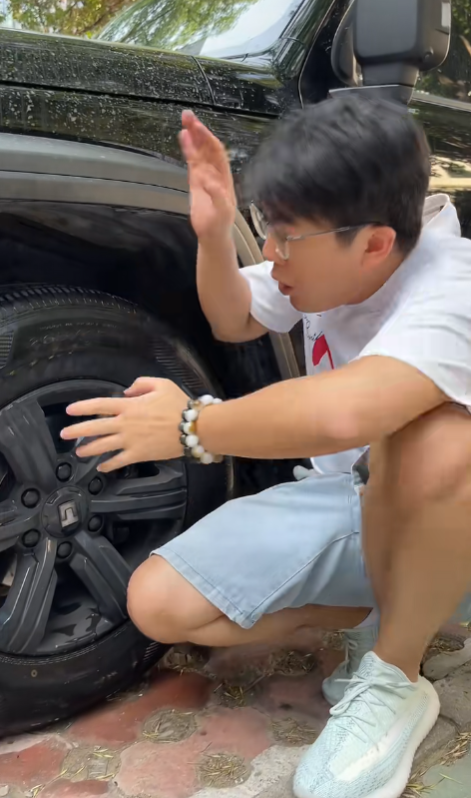
Car tires are one of the most important components of a vehicle, directly affecting safety, handling, fuel efficiency, and driving comfort. However, replacing them can be expensive, especially if you drive often or own a vehicle that requires large or specialty tires. The good news is that you can buy high-quality tires without overspending—but it requires some knowledge, patience, and smart shopping strategies.
In this guide, we’ll explore how to find the best tires at the lowest possible price while still ensuring they meet all safety and performance requirements.
1. Understand Your Tire Needs First
Before you even think about shopping, it’s important to know exactly what type of tire you need. Buying the wrong kind of tire—even at a low price—can cost you more in the long run.
Key factors to check:
- Tire Size: You can find this on the sidewall of your current tires. Example: 205/55R16.
- Tire Type: All-season, winter, summer, or performance tires.
- Load & Speed Ratings: Indicated by letters and numbers (e.g., 91V).
- Driving Conditions: City driving, off-road, snowy areas, or high-speed highways.
Knowing these specifications helps you avoid purchasing tires that won’t fit or perform well for your driving style.

2. Compare Prices Online Before Visiting Stores
The internet is your best tool for price comparison. Tire retailers often have different prices for the same product. Use multiple websites to find the average market price before deciding where to buy.
Useful online platforms:
- TireRack.com or DiscountTire.com – Compare a wide range of brands and models.
- Amazon or eBay – Sometimes offer discounted or overstocked tires.
- Local store websites – Many shops list online-only promotions.
Tip: Prices can vary drastically, even for the same model. A tire listed for $150 at one store might be $100 elsewhere.
3. Look for Promotions, Discounts, and Rebates
Tire companies and retailers often run seasonal promotions—especially in spring and fall. Major brands like Michelin, Goodyear, Bridgestone, and Continental sometimes offer rebates if you buy a set of four.
Ways to save:
- Manufacturer rebates – Check brand websites for ongoing offers.
- Buy 3, Get 1 Free deals – Popular at big chain stores.
- Holiday sales – Black Friday, New Year, and mid-year clearance sales.
- Coupons and promo codes – Search before checkout.
Example: A $70 rebate on a set of four tires could cover your installation cost.

4. Consider High-Quality Used or Take-Off Tires
If your budget is tight, lightly used tires can be an excellent option—if you know how to inspect them. Many dealerships sell “take-off” tires that were removed from new cars when buyers upgraded to custom wheels.
Things to check:
- Tread depth: Should be more than 6/32” for good performance.
- No visible cracks, bulges, or cuts.
- Manufacture date: Found in the DOT code (e.g., DOT 2519 means week 25 of 2019). Avoid tires older than 6 years.
Buying used from reputable shops or certified resellers ensures safety and performance.
5. Buy Off-Season
Tire prices often drop during the off-season.
- Winter tires are cheapest in spring or early summer.
- Summer tires are cheaper in winter.
Retailers clear out stock to make space for seasonal demand, and you can benefit from these timing-based discounts.
6. Don’t Ignore Lesser-Known but Trusted Brands
Everyone knows Michelin, Bridgestone, and Pirelli—but mid-tier brands like Hankook, Kumho, General Tire, and Falken often offer excellent performance at a much lower price.
These brands:
- Often produce tires for major manufacturers.
- Meet the same safety standards.
- Can last just as long if maintained properly.
For example, a Michelin tire might cost $180, while a similar Hankook tire could be $110 with almost the same performance rating.

7. Check Warehouse Clubs and Membership Stores
Stores like Costco, Sam’s Club, or BJ’s often have competitive tire prices that include free installation, balancing, and lifetime rotation services. The membership fee can pay for itself if you save $100+ on your purchase.
Advantages:
- Free tire pressure checks.
- Road hazard warranty.
- Seasonal promotions for members.
8. Negotiate and Ask for Price Matching
If you find a tire cheaper online or at another store, many local tire shops will match the price to keep your business. Even if they don’t match it exactly, they may offer free installation or a discount to get close.
How to negotiate:
- Bring a screenshot of the competitor’s price.
- Ask politely and mention you’d like to buy locally.
- Be ready to purchase immediately if they agree.
9. Buy a Full Set for Bigger Savings
Replacing all four tires at once may seem expensive, but retailers often give set discounts compared to buying one or two at a time. It also ensures even performance and wear, which extends the life of your tires.
Extra benefit: You’ll only pay once for installation and balancing.

10. Consider Local Tire Shops, Not Just Big Chains
Small, independent tire shops often have lower overhead costs and may be willing to give better deals than big corporate retailers. They also sometimes stock clearance items from overstock sales.
Tips for finding deals at local shops:
- Visit during weekdays when business is slower.
- Ask if they have “last year’s model” tires.
- Request quotes from 2–3 different shops.
11. Don’t Forget Installation Costs
Sometimes a cheap tire deal becomes expensive when installation fees are added. Always ask about:
- Mounting and balancing fees
- Tire disposal fees
- Valve stem replacement
- Alignment costs (optional but recommended with new tires)
A tire that’s $20 cheaper per unit but comes with $100 more in installation fees isn’t a real bargain.
12. Maintain Your Tires to Save in the Long Run
The cheapest tire is the one that lasts the longest. Proper maintenance can extend tire life by thousands of miles.
Maintenance tips:
- Check tire pressure monthly – Prevents uneven wear.
- Rotate tires every 5,000–7,000 miles – Keeps tread wear balanced.
- Avoid potholes and rough driving – Protects the tire structure.
- Wheel alignment – Keeps tires wearing evenly.
By keeping your tires in good condition, you delay the next purchase and save more over time.
Final Thoughts
Buying high-quality car tires at a low price is absolutely possible if you’re strategic. The key steps are:
- Know exactly what you need.
- Compare prices across multiple platforms.
- Take advantage of promotions and rebates.
- Be open to alternative brands and lightly used tires.
- Shop off-season and don’t be afraid to negotiate.
With a little research and patience, you can drive away with safe, durable tires that don’t break the bank—proving that quality and affordability can go hand in hand.



